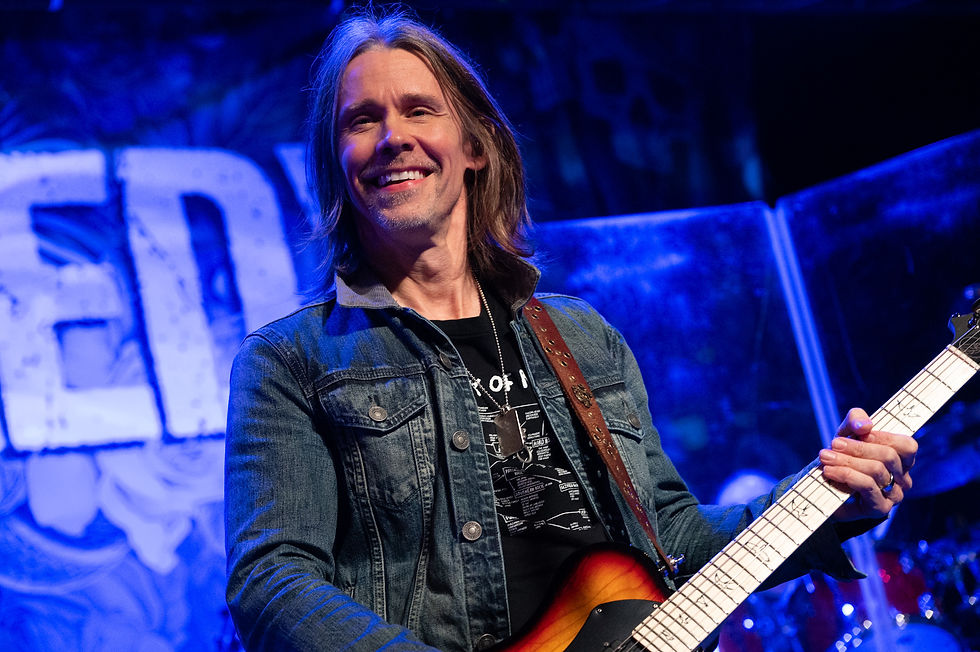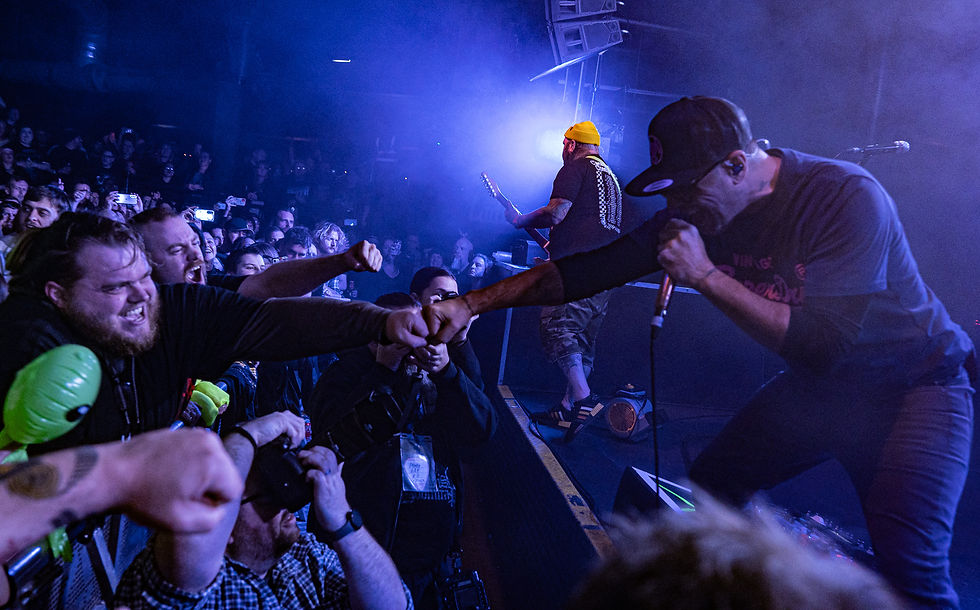5 tips on improving your gig photography
- Jess Robinson
- Jan 3
- 5 min read
Live music is undoubtably among some of the most exciting things to photograph, and any gig photographer will tell you that while at times it can be challenging, it is well worth the time and effort that goes into it. The great news is that the best way to improve and hone your skills, is, like any creative endeavor, to practice - and that involves attending lots of gigs!

Crowd shot at SiM Manchester Academy 3 by Christina Sylvester
In this article, we’ll break down five tips and tricks to try out at your next gig or to experiment with when you next sit down to edit. Remember that everyone has their own style and way of doing things that works for them, so the main thing is to have fun and not be afraid to try stuff out and get things wrong! Which leads us nicely into tip number one...
1 - Get things wrong!
Now, we know that’s probably what most of us are trying to avoid, however it’s no secret that getting things wrong is one of the best ways to learn any creative skill and especially good for ensuring it sticks. When we make (and acknowledge) mistakes, it helps us understand why we want to avoid them and gives more context and meaning towards better ways of doing things. Let’s have a look at an example:
A common mistake in gig photography is using the wrong focus mode. On most modern DSLR and mirrorless cameras you will have an option of two auto-focus modes: “AF-S" which means “Single AF” (also known as “One Shot” on Canon and “Single Area AF” on Nikon), and “AF-C” which means “Continuous AF” (also known as “AI Servo” on Canon). When shooting moving subjects, you want to be in AF-C (or AI Servo if you're on Canon). This means that while you are half pressing the shutter button your camera will continue to focus on the focus point or area you set even if you or your subject move, which in live music is often likely!
2 - Learn your camera
In the same way that musicians get to know their instruments so well they will often close their eyes while playing, it’s important to think of your camera in a similar way. A camera is a tool that assists you creatively, not a piece of technology that does the job for you. In the process of taking a photo, the first thing to happen is you notice something to photograph, then comes the camera. In settings where subjects can be fast moving and the light constantly changing, the length of time in between seeing a potential photo and taking it is crucial.

Myles Kennedy at Rock City by Nic Howells
In gig photography, even the most experienced shooters miss shots sometimes, because, due to the cruel laws of physics and biology, we can’t be in more than one place at a time, and we don’t have eyes on the backs of our heads. All we can do is give ourselves the best chances we can by learning our cameras set up like it's the back of our hand.
The good news is most modern cameras are pretty customisable, meaning you can set up your buttons and dials just as you like them. In your cameras settings there will be a menu named “Customise Buttons” (Canon) or “Custom Controls” (Nikon). Play around and see what suits you best! Knowing your exposure and focus point controls without looking is important when shooting gigs.
3 - Listen
It can be easy to get so focused on what you are looking at that sometimes it is easy to tune out the music being played. Even though it is your job to take still images, what determines a great photographer from a good one is their ability to convey the sound through visual story telling.
Next time you are at a gig, even without your camera, ask yourself these questions: What visual cues are there that signify the genre of music being performed? How are the musicians using body language and movement to express their music? It could be in the lighting, the stage design, the artists clothing or makeup, or in the way they move around the stage energetically or stand still and play/sing delicately.
When you stop for a moment to listen and feel the energy in the room, you will often find yourself tuning in to the artist better, meaning you will more often find yourself in the right place at the right time to get some killer shots!
4 - Photograph the crowd

Alien Ant Farm at Rock City by Nic Howells
It might sound like a no brainer, but often when there is so much happening on stage, we can forget who the gig is really about – the fans. Bands and artists are fun to photograph since they are often natural performers and (on a good day) beautifully lit by stage lights, however without the audience there wouldn’t be a show, so make sure you capture the energy and atmosphere in the crowd too!
Depending on where you want to go in your music photography career, it is also worth remembering that when you work directly with artists, they will want to use your photos to promote their live shows, so make sure you know how to convey the experience the artist is offering!
It can be tricky to get good crowd shots when the light is mostly focused on the stage, but armed with tip #2, you should be able to react quickly when the audience is lit up for a moment. Another way to approach it is by heading to the back of the room and looking for interesting and visually aesthetic silhouettes against the light from the stage.
5 - Don’t be selfish
Finally, make sure you are aware and considerate of the crowd and/or other photographers who you're sharing the space with. Gig photography can be a way for many of us to get involved in and feel a part of a wider community of like-minded people who love live music, so always remember that no photograph is worth making someone else's night less fun by scrambling like paparazzi to get “the shot”!
Sometimes being assertive is needed to make sure you can get your job done, but as long as you stay aware of your surroundings and watch out for others, you’ll help everyone have a great time along with you!
We hope that these tips will help give you more confidence to take to your next gig, as well as some fun things to try out and experiment with. Photography is a wonderful art form that allows us to explore a variety of experiences, so most importantly, never forget why live music was one you were drawn to!
%20(T%20Shirt).png)
Comments